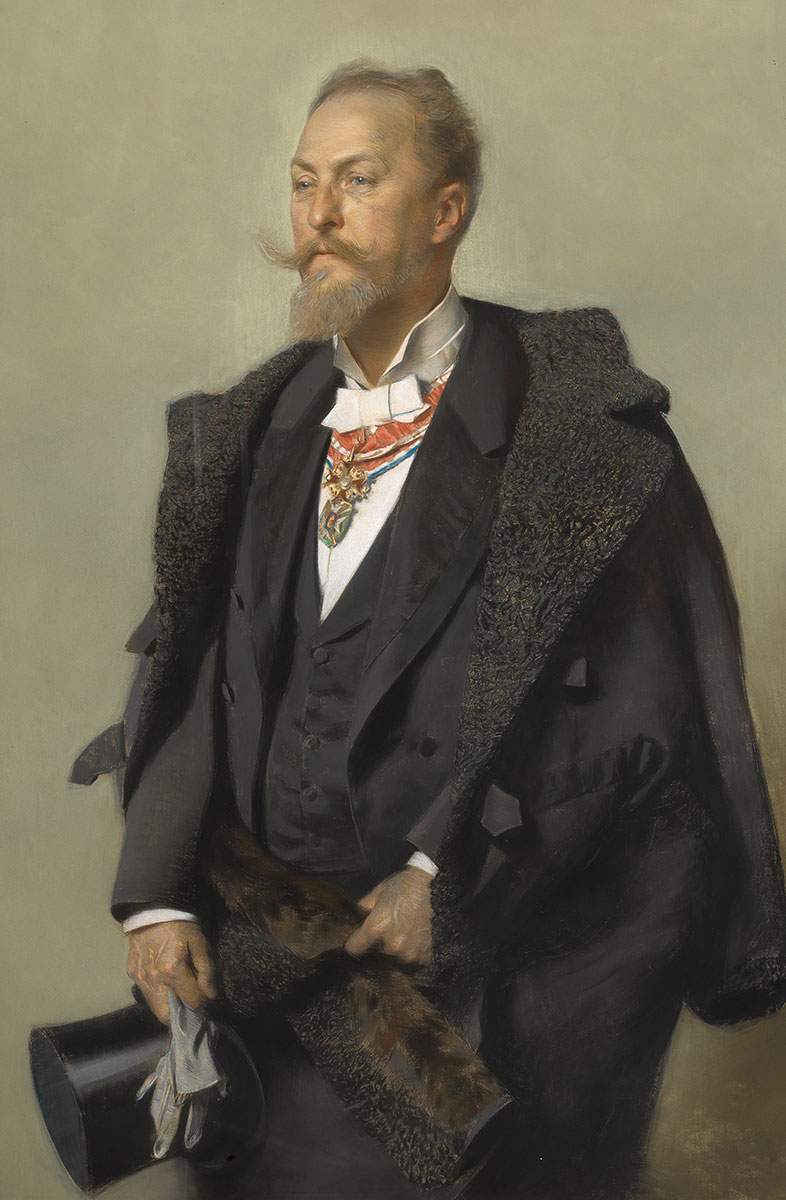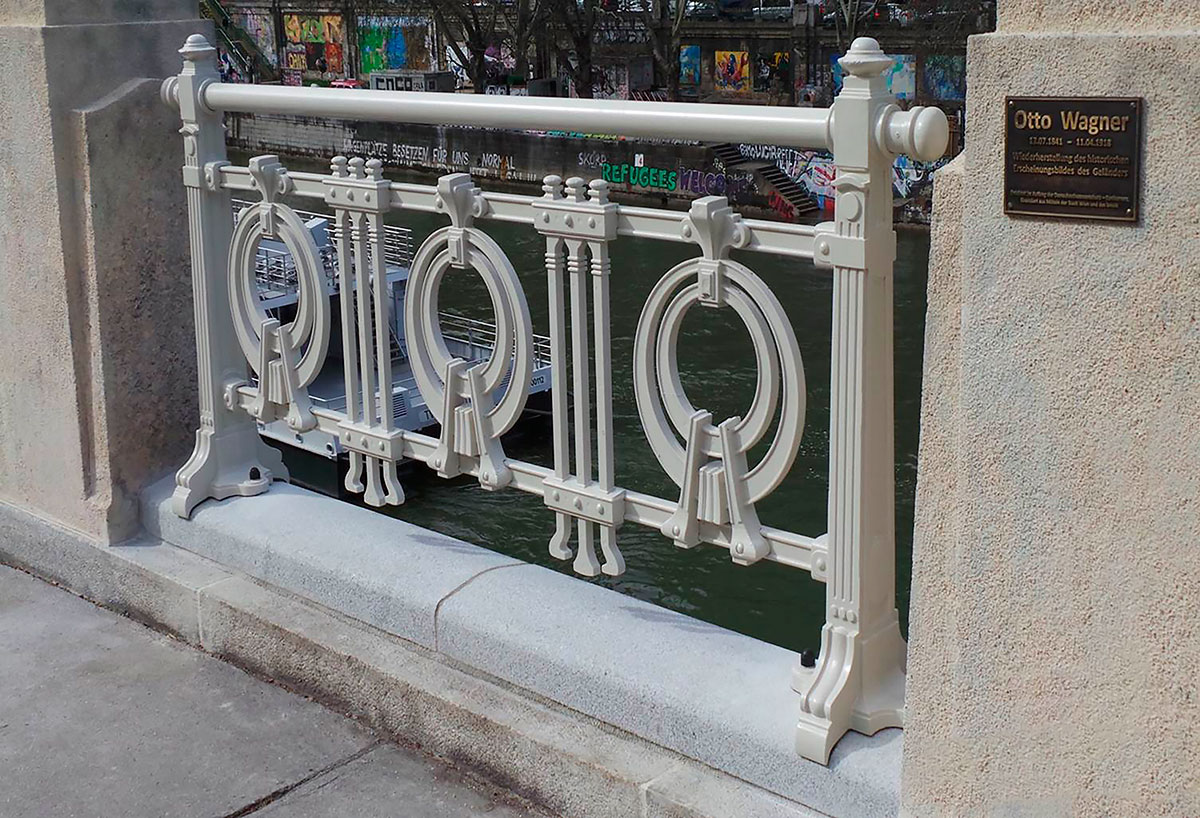VIENNA URBAN RAILWAY AND OTTO WAGNER
Vienna, which already had 1.5 million inhabitants in 1890 and was then considered the third largest city in Europe, experienced a rapid development at the end of the 19. century. In a very short time, the authorities decided on one of the biggest projects in the history of the city. This was the construction of a little less than 40 kilometres long urban railway network, known in Vienna as the Die Wiener Stadtbahn, meant to connect the city centre with all its suburbs.
The planning of such a large project was entrusted to the Viennese architect Otto Wagner (1841–1918), who established himself as the leading Viennese architect of his time. He was a professor at the Academy of Fine Arts in Vienna, while today he is known primarily as the creator and bearer of the famous architectural style called Viennese Secession.
 Otto Wagner (1841–1918) Gottlieb Theodor Kempf von Hartenkamp, Otto Wagner, 1896 © Bildrecht, Vienna 2023. Photo by: Birgit and Peter Kainz, Vienna Museum.
Otto Wagner (1841–1918) Gottlieb Theodor Kempf von Hartenkamp, Otto Wagner, 1896 © Bildrecht, Vienna 2023. Photo by: Birgit and Peter Kainz, Vienna Museum.
In 1894, with the contract signed with the General Directorate of the Austrian State Railways, he was entrusted with the mandate for the integrated urban planning and architectural design of the Vienna urban railway. To carry out this project, Wagner formed a working group of around 70 experts in his atelier. Among them, he invited two Slovenian architects, Maks Fabiani, who left after two years of work and continued with his own career, and Jože Plečnik.
Wagner wanted to turn a train journey through Vienna into an aesthetic pleasure and experience, which he clearly succeeded in doing. The coordinated image of the entire system of Vienna’s urban railway was made up of architectural elements. Among them, railings played an extremely important role, as they physically separated the existing road traffic and especially pedestrians from the railway. At the same time, the railing became an integral decorative element of the entire project as well as of the urban environment in which it was placed.
In Wagner’s atelier, several versions of ornamented and decorated iron railings in the Secessionist style were created, which were placed along urban railway. Among all the models, two stand out, one of which bears a sunflower motif, and the other a motif with stylized laurel wreaths. The latter were already a symbol of victory in ancient times, and in his works they were supposed to symbolize victory of the new architectural (Secessionist and at the same time Wagner’s) style over the historicist style that had prevailed until then. At the same time, Wagner’s laurel wreath glorified and symbolized the role of the then emperor.
 Replica of Wagner’s railing along the Danube Canal in Vienna in the original beige colour (stored by Metz & Partners, Vienna).
Replica of Wagner’s railing along the Danube Canal in Vienna in the original beige colour (stored by Metz & Partners, Vienna).